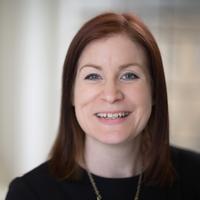All too often, a deterioration in sight and hearing is seen as bound up with the process of getting older, and as a result is under-reported in self-assessed measures of disability. When hearing and vision are impaired they present a unique challenge, more than the sum of their parts, as it “reduces one’s biological resources and capacities for adaptation because it interferes with one’s ability to compensate for one primary sensory modality with the other” (Brennan and Bally, 2007: 284). Dual-sensory impairment (DSI), or ‘deafblindness’ is a distinct disability from hearing or visual impairment and was officially recognised by the European Parliament in 2004 with the approval of the Written Declaration on the Rights of Deafblind (Declaration 1/2004, Howitt et al., 2004). The declaration utilises the Nordic definition of deafblindness which includes reference to the specific barriers related to the dual impairment: “Deafblindness is a distinct disability. It is a combined vision and hearing disability. It limits activities of a person and restricts full participation in society to such a degree that society is required to facilitate specific services, environmental alterations and/or technology” (Nordisk Lederforum, 2007). Though Statutory Guidance issued in 2001 requires local authorities to record the numbers of people they have identified as having DSI, there is no common understanding of how to apply the definition (Hodges and Douglas, 2007). Estimates suggest there are around 350,000 people with DSI in the UK, of whom 132,000 have severe impairments. A report by the Centre for Disability Research (CDR) (Robertson and Emerson, 2010), estimated that 222,000 of these people are over 70 years of age and that by 2030 the numbers of people with DSI will reach nearly 570,000 (a 60% increase), among whom 418,000 will be over the age of 70.
It is issues related to technology, as included in the Nordic definition, and its ability to assist older adults with DSI to engage in daily activities and interact with their communities which the Institute explored in collaboration with CIRCLE at the University of Sheffield in a study commissioned by Sense, the charity for deafblind people. Assistive technology, telecare and telehealth are increasingly part of health and social care arrangements in the UK, with a long lineage back to pull cord systems in social housing in the 1960s. It is important to consider therefore not only the potential benefits technology can offer but also whether certain groups are excluded from these advancements. The project team conducted qualitative, longitudinal interviews with 38 older adults with DSI across England. We found a great many of our sample were engaging with technology and using it to navigate certain challenges they faced both inside (related to cooking, cleaning, personal care) and outside (including travel, shopping, socialising) their homes, as well as in communicating with others. Even amongst the most ‘tech-savvy’ members of our sample, the array of equipment available both on the private pay market and through state and third sector providers is already vast and confusing - and likely to become more so in the future. Though we identified situations where technology could help people with DSI navigate challenges they face in everyday life, there were various barriers to accessing and using technology successfully, including individuals perceptions and attitudes towards technology; awareness and access to devices; issues related to cost and choice, and finally we also found that often the design of products was not entirely satisfactory and without ongoing support, they could then be abandoned. We launched our project report on 10th March, available here, which includes a series of recommendations for key stakeholders to help to ensure that all older adults, irrespective of impairment, can access the support and devices they need to live full and independent lives.
References
- Brennan, M., & Bally, S. J. (2007). ‘Psychosocial adaptations to dual sensory loss in middle and late adulthood’, Trends in Amplification, 11(4), 281-300.
- Nordisk Lederforum. (2007). The Revised Nordic Definition of Deafblindness, Aalborg, Denmark, Nordisk Velfærdscenter Uddannelse for Døblindpersonale. Available at: http://www.nordicwelfare.org/PageFiles/992/Nordic%20Definition%20of%20Deafblindness.pdf
- Robertson, J., & Emerson, E. (2010). Estimating the number of people with co-occurring vision and hearing impairments in the UK, Lancaster: Centre for Disability Research, Lancaster University.
About the Author:
Dr Kate Hamblin is a Senior Research Fellow at the Oxford Institute of Population Ageing. Kate is currently working on a follow-on project examining self-employment for older workers as well as a further collaboration with CIRCLE on a piece of research commissioned by SENSE (the deaf-blind charity) to explore telecare use by individuals with dual-sensory impairment. She is also engaged in a John Fell Fund project exploring the outcomes of the Museum of Oxford’s reminiscence programme and a study examining the work and retirement aspirations of older self-employed people.
Opinions of the blogger is their own and not endorsed by the Institute
Comments Welcome: We welcome your comments on this or any of the Institute's blog posts. Please feel free to email comments to be posted on your behalf to administrator@ageing.ox.ac.uk or use the Disqus facility linked below.













